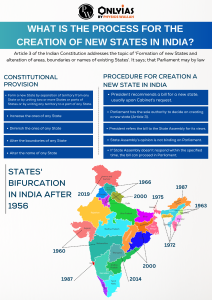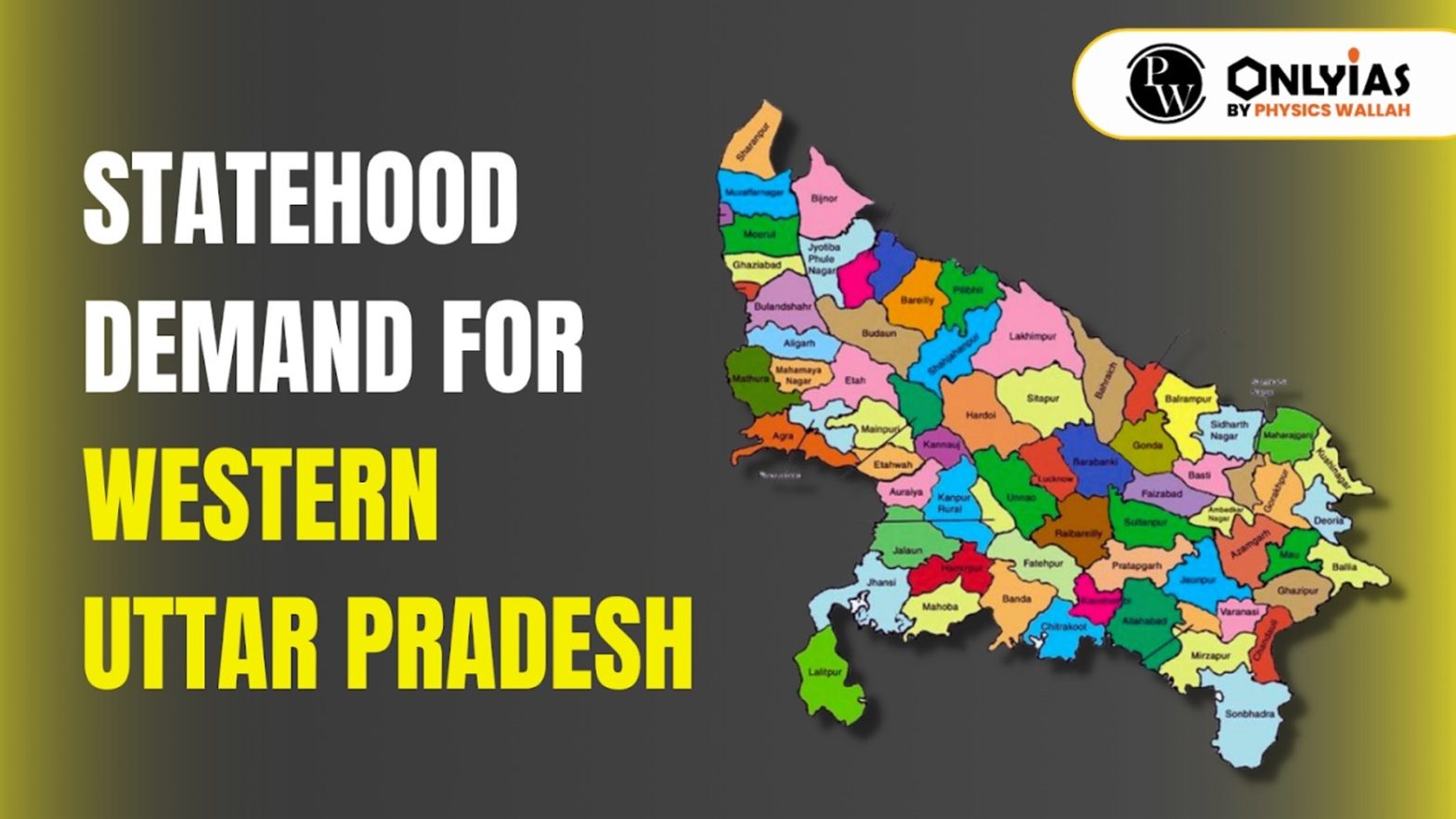Context:
- This article is based on an Editorial “Sanjeev Balyan’s pitch for west UP statehood sets off a churn in region, draws BJP blowback” which was published in the Indian Express. Recently, Union Minister of State Sanjeev Balyan has voiced a statehood demand, calling for the division of the state to establish West Uttar Pradesh as a separate state, with Meerut as its capital.
- He claimed that West UP with a population of over eight crore would be “best and most prosperous state” in the country.
| Relevancy for Prelims: Statehood deman for western UP, and State Bifurcation in India.
Relevancy for Mains: Regionalism, Formation of States and its associated significance and issues. |
Arguments in favor of Creation of Small States in India – Amid Growing statehood demand
- Better Governance and Administration: Smaller states are easier to manage and administer, as they have a smaller population and geographical area. This can lead to better public services and development.
- More Equitable Distribution of Resources: Smaller states can ensure that resources are more equitably distributed among different regions and communities. This is because there is less competition for resources and the government is more accountable to the people.
- Increased Participation in Democracy: Smaller states can encourage greater participation in democracy, as people feel more connected to their government and have a greater say in decision-making.
- Cultural and Linguistic Preservation: Smaller states can help to preserve and promote distinct cultures and languages. This is because people are more likely to feel a sense of identity and belonging to a smaller state.
States’ bifurcation in India after 1956:
- 1960: Maharashtra and Gujarat from Bombay
- 1963: Nagaland from Assam
- 1966: Haryana and Himachal Pradesh from Punjab
- 1972: Formation of Meghalaya, Manipur and Tripura
- 1975: Sikkim became part of Indian Union
- 1987: Goa and Arunachal Pradesh became states (earlier Union Territories)
- 2000: Uttaranchal (from Uttar Pradesh), Jharkhand (from Bihar) and Chhattisgarh (from Madhya Pradesh)
- 2014: Telangana (from Andhra Pradesh)
|

ALSO READ: Union And Its Territory(Article 1 – 4) In Constitution Of India
Arguments against granting statehood demand to smaller regions in India:
- Increased Administrative Costs: The creation of new states can lead to increased administrative costs, as new government institutions need to be set up and maintained.
- Inter-State Disputes: Smaller states can lead to an increase in inter-state disputes, as there is more competition for resources and territory.
- Loss of National Unity: The creation of new states can lead to a weakening of national unity, as people may identify more with their state than with the country as a whole.
- Regional Imbalances: Smaller states may not be able to generate enough resources to sustain themselves, which can lead to regional imbalances.
ALSO READ: SPECIAL PROVISIONS FOR SOME STATES
Conclusion
The Statehood demand can not be measured on a single parameter, there should be parameters on a case by case basis as every particular case has its own unique reason. Rather to create a new state, it would be better to empower the third tier of the Indian Federal System to bring more transparency and enhancement in governance and development.
| Attempt the PY Prelims Question
What was the exact constitutional status of India on 26th January, 1950? (2021)
- A Democratic Republic
- A Sovereign Democratic Republic
- A Sovereign Secular Democratic Republic
- A Sovereign Socialist Secular Democratic Republic
Ans: B |
| Attempt the Mains Question: Growing feeling of regionalism is an important factor in the generation of demand for a separate state. Discuss. (GS Paper 2; UPSC Mains 2013) |
![]() 5 Oct 2023
5 Oct 2023

